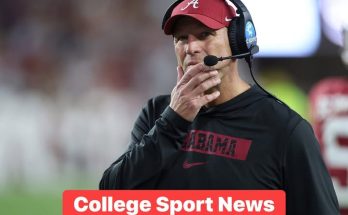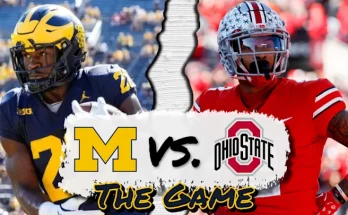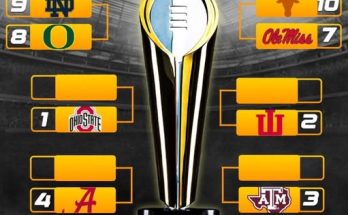In a development that has sent shockwaves through the world of college football, former head coach Nick Saban has announced his return to the University of Alabama, declaring, “I am coming back to revive the team and see us win again.” The statement alone carries the weight of a dynasty, a legacy, and an unrelenting pursuit of greatness. Saban’s return is more than just a homecoming — it is a declaration of unfinished business, a rekindling of the fire that helped transform Alabama into the epicenter of college football excellence for over a decade.
For fans of Alabama, this announcement marks a moment of renewed hope. The Crimson Tide faithful, accustomed to dominance under Saban’s reign from 2007 until his initial retirement in 2023, now see a familiar figure stepping back onto the sidelines — a figure who amassed seven national championships, ten SEC titles, and a culture that came to define modern college football. Saban’s coaching style — intense, methodical, and deeply rooted in discipline and precision — was both feared and revered. But what does his return mean in the current landscape of the game, and what motivated this unexpected comeback?
Reports suggest that Saban, now in his seventies, never truly left the game emotionally. Though he transitioned into television commentary and consulting roles following his retirement, those close to him say the fire remained. Sources reveal that he continued to spend hours each day reviewing game film, mentoring coaches, and staying closely connected with the Alabama program. He was never far from the sport, and more importantly, never far from Tuscaloosa — both physically and spiritually. His heart remained tethered to Bryant-Denny Stadium, to the pulse of the Tide, and to the young men whose lives he shaped over decades.
The timing of his return coincides with a turbulent stretch for Alabama football. After two seasons of what some fans considered underwhelming results — including back-to-back losses to rivals and an SEC Championship drought — the program was at a crossroads. Despite strong recruiting classes and high expectations, the team lacked the consistency, ferocity, and identity that became synonymous with Saban-led squads. Leadership seemed to be missing, the culture slightly diluted. And while his successor, a highly regarded coach in his own right, did everything possible to maintain the standard, the echoes of Saban’s tenure loomed large over every play, every press conference, and every locker room speech.
Saban’s decision was not made lightly. He has always maintained that he would not return to coaching unless he believed he could fully commit — physically, mentally, and emotionally. Friends and colleagues say the decision followed months of internal debate, quiet conversations with his wife Terry, and numerous visits with Alabama’s athletic director and boosters. But when he saw the program teetering between potential stagnation and resurgence, he felt compelled to step in. He saw a team that still had elite talent, a coaching staff hungry for direction, and a fanbase that never stopped believing. To Saban, the ingredients were all there — they just needed a steady hand, a proven system, and that familiar edge of accountability and execution.
The reaction from the college football community has been electric. Rival fans groaned. Former players celebrated. Analysts scrambled to re-evaluate power rankings and preseason predictions. Even within the Alabama locker room, whispers quickly turned into cheers. Current players, many of whom grew up idolizing Saban’s dominant teams, now find themselves under the tutelage of the man who once turned recruits into legends. And for Saban, this group represents an opportunity — not to relive past glories, but to forge a new era of dominance.
His coaching philosophy, famously encapsulated in “The Process,” is not about wins and losses, but about preparation, discipline, and doing the right thing at all times — in the weight room, the classroom, and in life. Saban has often said, “Mediocre people don’t like high achievers, and high achievers don’t like mediocre people.” This uncompromising mindset is what built Alabama’s dynasty. His return signals a recommitment to those principles, a message that the days of merely competing are over. Alabama, under Saban, doesn’t just aim to participate — it expects to dominate.
Recruiting, always a cornerstone of Saban’s success, will now take on new energy. Even during his retirement, his influence lingered in recruiting circles. Now, his presence on the trail is official again. Parents trust him. Recruits idolize him. And high school coaches around the country know that if Saban walks into your gym, your player is about to be pushed toward greatness. Already, reports suggest that several top recruits are reconsidering commitments elsewhere, intrigued by the chance to be molded by the legendary coach. The ripple effect of his return may not fully be felt until the 2026 class, but make no mistake — the shockwaves are already spreading.
Yet Saban is not naive. He understands the challenges ahead. The college football landscape has changed dramatically since he last coached a game. The rise of NIL deals, the transfer portal’s chaotic impact, and the growing complexity of managing rosters in a semi-professional environment all require adaptability and innovation. But if there’s one thing Saban has always excelled at, it’s evolution. He was once criticized for being too defensive-minded — then he embraced spread offenses and built juggernauts. He was called old-school — then he hired young, dynamic coordinators and adjusted with the times. Saban’s genius lies not in stubbornness, but in his relentless pursuit of what works.
Behind the scenes, Alabama’s administration is going all in. Investments in facilities, analytics, and support staff are being fast-tracked. Alumni donations are surging. Saban’s return is more than symbolic; it is being treated as a strategic pivot, a reclaiming of elite status. And with the College Football Playoff expanding and conferences realigning, Alabama sees this moment as a critical opportunity to reassert its place at the top of the food chain.
As practices resume, all eyes will be on Saban’s sideline demeanor — the intense glare, the whistle around his neck, the sharp critiques and relentless demands. But within that fire lies mentorship, care, and a deep love for the game. Saban has never coached for money, fame, or ego. He has coached because he believes in the transformative power of football. He believes in structure, in teaching life lessons through adversity, in turning boys into men. His players may fear disappointing him, but they revere what he brings to their lives.
For Alabama, the next season will not just be about wins. It will be about reestablishing identity. It will be about reminding the nation who they are — not because of the number of titles, but because of the standard they hold themselves to. Saban’s message will echo through every locker room: Trust the process. Do your job. Be accountable. Execute with precision. Leave no doubt.
Critics may question whether a man in his seventies can still keep up with the relentless demands of the job. But for those who’ve seen Saban operate up close, the answer is clear: there is no slowing down in his eyes, no dimming of the fire. He returns not out of nostalgia, but because he believes he can win. Because he sees a team worth leading. Because, in his own words, he wants to revive the team and see them win again.
This story will be told and retold for generations: the legend who built the empire, walked away, and then returned — not for comfort, but for conquest. Nick Saban is back. The college football world has been put on notice. And in Tuscaloosa, the drums of war are beating again.



